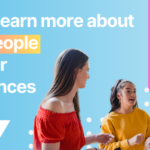The Department for Education has today launched its user insight research into post 16 options conducted by Deirdre Hughes OBE. The aim of the research was to assess how young people make educational choices post-16 and what information they use.
The objectives were:
- To explore which sources of information are used, and how they are used, when learners (aged 16-19) are making educational choices and how this differs by type of learner, institution, and destination.
- To understand how advice and guidance and application systems interact with these choices.
- To explore potential advantages of a centralised digital course and application system in supporting effective choices.
Overview of the approach
The report explains that the focus for the research is young people aged 16-19 who are currently engaged in the post-16 sector in England. In this context, ‘post-16’ encompasses School/Academy Sixth Forms, University Technical Colleges (UTCs), Sixth Form Colleges, FE Colleges (FECs) (including general, land-based and specialist institutions), apprenticeships and higher education (HE). As the focus for the research is on the decisions made at key transition points at age 16 and 18, the sample of HE students is limited to those in their first year of undergraduate study only. A mixed-methods approach was adopted which combined a large-scale survey and semi-structured interviews with current learners aged 16 – 19.
Key findings:
We explore some of the key findings here but encourage you to download read the full report here:
.When decisions are made:
- Although a small proportion of young people start thinking about their post-16 choices as early as primary school, it is most common for them to begin this process in earnest during Year 11.
- Grammar school pupils, learners on academic pathways, young people with a least one parent with a university education, and those with Special Educational Needs (SEN)1 start thinking about their post-16 options earlier than other groups. Young people typically leave the final decision until the final year of study prior to making a transition – Year 11 for those progressing into some form of FE and Year 13 for those progressing into HE. However, those on academic routes are more likely to make a final decision earlier than those on a technical pathway.
Individual sources of help
- The vast majority of young people consult with at least one individual for help and support with decision-making and, on average, consult with three sources.
- Young people most commonly turn to ‘informal sources’ including parents/carers, teachers and friends. Although more limited use is made of careers advisers and local employers, those who do consult them find them useful.
- Those who consulted staff during an open day or a direct visit to an educational institution regard them as the most useful source of help. Although learners on academic and technical routes consult similar individuals, those on technical pathways typically rate the help they receive as less useful than those on academic routes, with the exception of parents/carers and staff at open days.
Tools and resources
- There are a plethora of tools and resources available to support young people with their decision-making. Factor analysis reveals that there are five groups of resources that young people typically use: university focused; mentoring focused; vocationally focused; careers focused and STEM focused. These resources are often tailored to specific audiences, and this is broadly reflected in the groups that use them.
- On average, young people access two resources. However, a substantial minority do not use any; this is more prevalent amongst those on technical than academic routes. Learning providers’ websites are rated as the most useful of the tools and resources young people use, followed by comparison sites.
Wider resources
- Although less use is made of wider sources of Information, Advice and Guidance (IAG), those who use them find the most useful source of help with decision- making when compared with individuals and tools and resources.
- Work experience/internships and extra-curricular activities are regarded as particularly helpful. Young people from lower socio-economic groups often lack the social capital and networks that help to facilitate access to these opportunities, and it is notable that use is more prominent amongst more advantaged survey respondents, such as those who attended independent schools, those whose parents are university educated and those who do not qualify for Free School Meals (FSM).
Type of information sought and ease of access
- The types of information young people seek fall into four categories: costs involved in studying; outcomes of studying; course approach; and wider knowledge of course.
- Young people most commonly seek information on the qualifications and grades they need to get on a course and information on what they will learn. Those in HE are more concerned than those in FE to obtain information about the jobs and earnings of people who have studied the course they are considering and the financial support that is available. Learners who are currently eligible or in receipt of FSM and/or the 16-19 Bursary are also more likely to seek information on financial support and course costs.
- Although the information that young people most commonly seek is easy to find, accessing information, such as what learners do and earn after the course, dropout rates and the financial support available, is perceived to be more difficult, particularly for learners with special educational needs (SEN).
- The majority of young people find it easy to decide which post-16/post-18 course to apply for. Learners on academic routes (FE and HE) are more likely to find it difficult to make a decision than learners on technical routes. Black and Minority Ethnic (BAME) young people along with those with SEN are also more likely to find decision-making difficult. Help to choose the right course and subsequent guidance and support with applications are key.
Preferences for IAG
- Although most young people are willing to access information online, there is strong preference for face-to-face help and support with decision-making. The findings suggest that more needs to be done to raise awareness amongst young people, particularly those with SEN, to help with their decision-making and to encourage those from lower socio-economic groups to make use of careers information, advice and guidance (IAG).
The role of a centralised system in an enhanced careers IAG offer
- Most young people are able to find the information they believe they need to make fully informed decisions about post-16 education. However, a substantial minority, particularly Academic (FE and HE) students, do not know which of the myriad of information sources they can trust. Three-fifths of respondents agree that the decision-making process would be easier if all the information about courses and how to apply was in one place. Technical (FE/HE) learners were more likely to strongly agree compared with Academic (FE and HE) learners.
- Respondents during the qualitative interviews welcomed the idea of a new system which improved the quality and depth of course information available to students as well as provided information on specialist student support services, destinations, and student career trajectories.
Conclusions: Implications for policy
A new careers strategy in England provides an ideal opportunity to consider the findings from this report. Young people’s career decision-making styles, processes and strategies vary considerably. Their preferences for support are mixed, with some preferring to simply use internet search engines to find the information they need and others preferring a combination of formal face-to-face and online careers support.
- Although most young people perceive that they have access to the information they need to make informed decisions, there are calls for improvements in the careers support they and their peers receive. There is evidence that for some, access to impartial and independent IAG is limited and, as a result, young people turn to informal sources including parents, friends and class teachers who try to do their best for students but who may have limited knowledge and experience of the full range of options.
- The concept of institutional habitus, or the ways in which an institution (e.g. schools, colleges, employers and training providers) exhibits expectations of who and what its students are expected to be, is also an important influence on post-16 choices and decision-making. There were reports of some schools withholding FE and apprenticeship information, particularly to academically-able students, and of young people who aspired to HE being channelled down technical routes. Some young people indicated their peers, who had limited social or cultural capital, did not have adequate careers IAG to help them make the most of their talents and abilities.
- Overall, the majority of respondents highlighted a desire for improvements in the quality and depth of course information available, as well as information about specialist student support services, destinations and career trajectories. Having all of this information in one place, communicated well to young people, teachers, parents, employers, careers professionals and others, could help more young people to be aware of the full range of options available to them.
- The findings in this report offer some opportunities and challenges for policymakers seeking to identify interventions to help support young people to progress in their chosen pathways. The intersectionality between factors means that it is impossible to determine the extent and relative influence of the range of factors affecting a young person at a given point in time with any certainty. Therefore, potential interventions which look to increase effective post-16 choices and decision-making are likely to be most effective if developed within a coherent careers IAG framework. Such a framework would look to incorporate both ‘push and pull’ interventions, addressing barriers while simultaneously promoting the benefits for different groups of individuals.
Factors that would create improved careers support for learners include:
- Understanding that different young people will have different requirements at different times in their lives and that support should be personalised and tailored accordingly.
- Focusing on the needs of particular groups of learners who experience difficulty in course choice and decision making such as BAME groups and learners with SEN.
- Raising awareness of the full range of opportunities amongst young people and their informal and formal support networks, particularly from Year 9 onwards.
- Supporting young people to access and make effective use of IAG in order for them (and their families) to have meaningful careers dialogue that supports their education and career decisions.
- Empowering young people and equipping them to have greater access to student destinations, labour market intelligence/information (LMI) and 21st century career trajectories.
- Recognising that strategic leadership is essential, particularly in schools and colleges, to ensure all young people from an early age have the right level of support through to the point at which key decisions post-16 options are made.
“While further research is needed to evaluate specific approaches to support young people’s career decision-making over time e.g. more longitudinal tracking and analysis, the report shows there is a greater chance that an individual will, irrespective of their gender, socioeconomic status or ethnicity, progress if the right careers IAG is in place. It is crucial to recognise that the steps a disadvantaged young person has to take in order to participate in post-16 course choice and decision-making can be quite profound, compared to more advantaged young people. The voices of young people who took part in this research show they are keen to see improvements in careers IAG for themselves and the next generation coming through England’s schooling system”.












